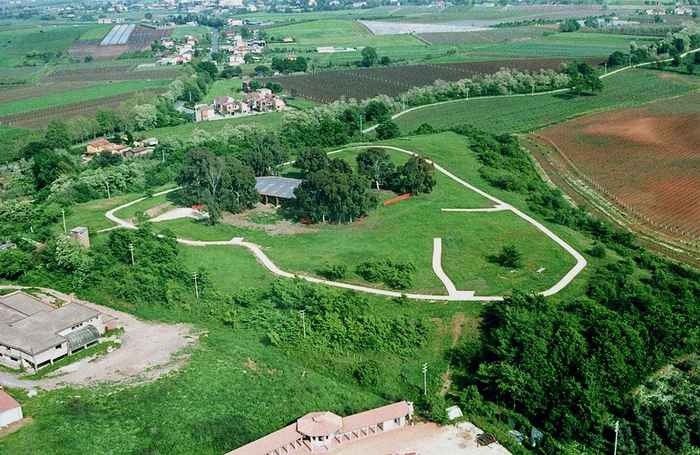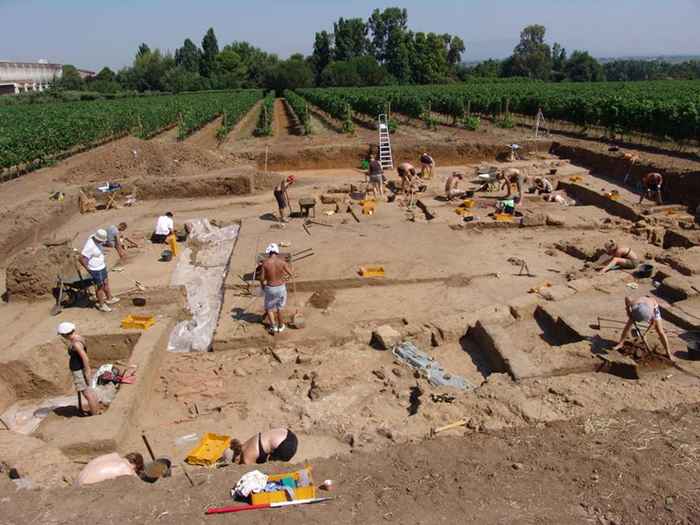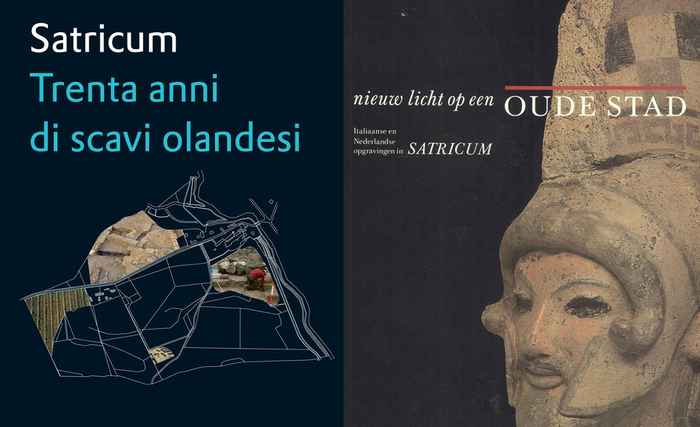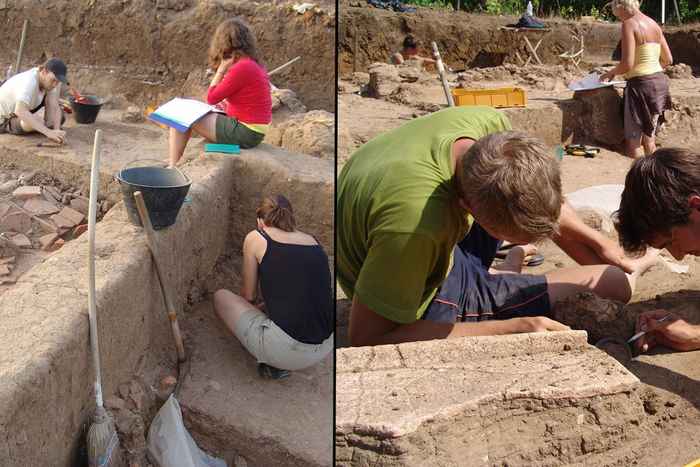Satricum

The site was discovered in the late nineteenth century, after which Italian archaeologists excavated large parts of the town (1896-1898 and 1907-1910). Research in Satricum was taken up again in 1977 by Dutch archaeologists who are still active on the site, at first by the Dutch Institute in Rome and the Rijksuniversiteit Groningen, from 1991 onwards by the University of Amsterdam.
Satricums’ favorable location at the crossroads between the northern Etruscan and southern Greek areas is reflected in the remarkable diversity of the archaeological material. At the same time, it is one of the best preserved sites in central Italy revealing archaeological remains which cover a period of continuous occupation from nearly ten centuries (9th century BC- 1st century AD) comprising huts, houses, burial grounds, a road network, a small sanctuary, and a Roman villa. The site, however, is best known for the archaic sanctuary of Mater Matuta, goddess of dawn, which has revealed three successive temple buildings (625-500/480 BC) preceded by a hut which is generally considered the earliest place of cult. Three enormous votive deposits testify to offering practices over a long period of time.

Why Satricum?
- Significant parts of the ancient town are relatively undamaged, i.e. an acropolis of 4 hectares with its monumental sanctuary and extensive remains of huts, houses and votive deposits. Thanks to these remains it is possible to obtain valuable information on the development of a Latin settlement.
- The long time-span of the towns’ existence as well as the great diversity of find contexts and archaeological material (9th century BC-1st century AD) offer the possibility to carry out diachronic research at various levels. Such archaeological continuity is exceptional in central Italy.
- The same chronological time-span and diversity of find contexts and ceramics (from hand-made pottery to decorated Greek imports) make Satricum an ideal candidate for ceramics research concerning production technology and organization, as well as perception and use of pottery of different traditions and provenances in various functional and cultural contexts over time.
- Because of the central and strategic location of the town at a crossroads between the Greek south, the Etruscan north and along an important route to the hinterland, Satricum reflects many foreign influences. The result is an archaeologically extremely variegated finds record.
- In antiquity, the site enjoyed a great renown because of the sanctuary of Mater Matuta. This is reflected in a huge amount and variety of objects in three large votive depots in the sanctuary. These contexts and finds offer a unique possibility to study religious behavior of a pre-Roman community.
Excavation and research
Archaeological park
Thanks to a subsidy of the European Commission in 2000 a start could be made with the archaeological park Satricum. The remains of the temples of Mater Matuta were freed from a protective layer of soil, roofed over, and made accessible to the public. The former iron mill and straw-board factory of le Ferriere has been rebuilt into a small documentary centre displaying information on the ancient site. The factory is currently housing a major archaeological exhibition presenting the results of thirty seven years of Dutch archaeological research. More than 700 objects recovered during the Dutch excavations are on show. The exhibition will be open until 1 November 2015.

Publications
- Satricum-series: a series of scientific publications under the auspices of the University of Amsterdam (publisher Peeters, Leuven)
- Satricana-series: a series of popular scientific booklets published by the Dutch Study Center for Latium
- Exhibition catalogues
- Preliminary reports of the Amsterdam Archaeological Center (AAC), University of Amsterdam

The Satricum Project is made possible by permission of the Italian Ministry of Culture and with collaboration of the Soprintendenza per i Beni Archeologici per il Lazio. Financial support is provided by the University of Amsterdam and the Azienda Agricola “Casale del Giglio” (Le Ferriere).
Scientific members of the Satricum project: Prof. Marijke Gnade, AAC (project leader); Dr. Barbara Heldring; Dr. Patricia S. Lulof, Dr. Riemer R. Knoop, Dr. D.C. Steures, Reno Raaymakers, Jeltsje A. Stobbe, Martina Revello Lami, Muriel Louwaard.